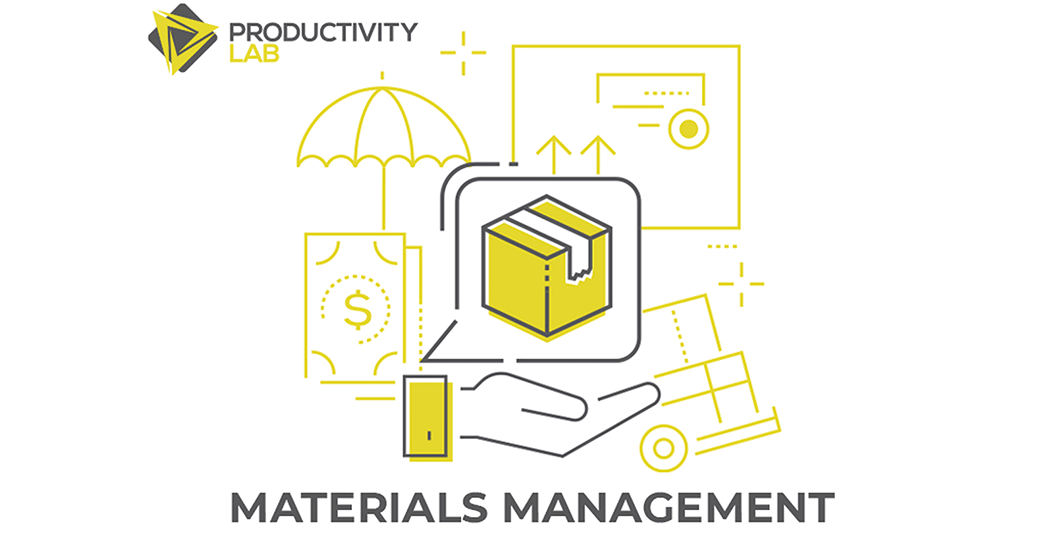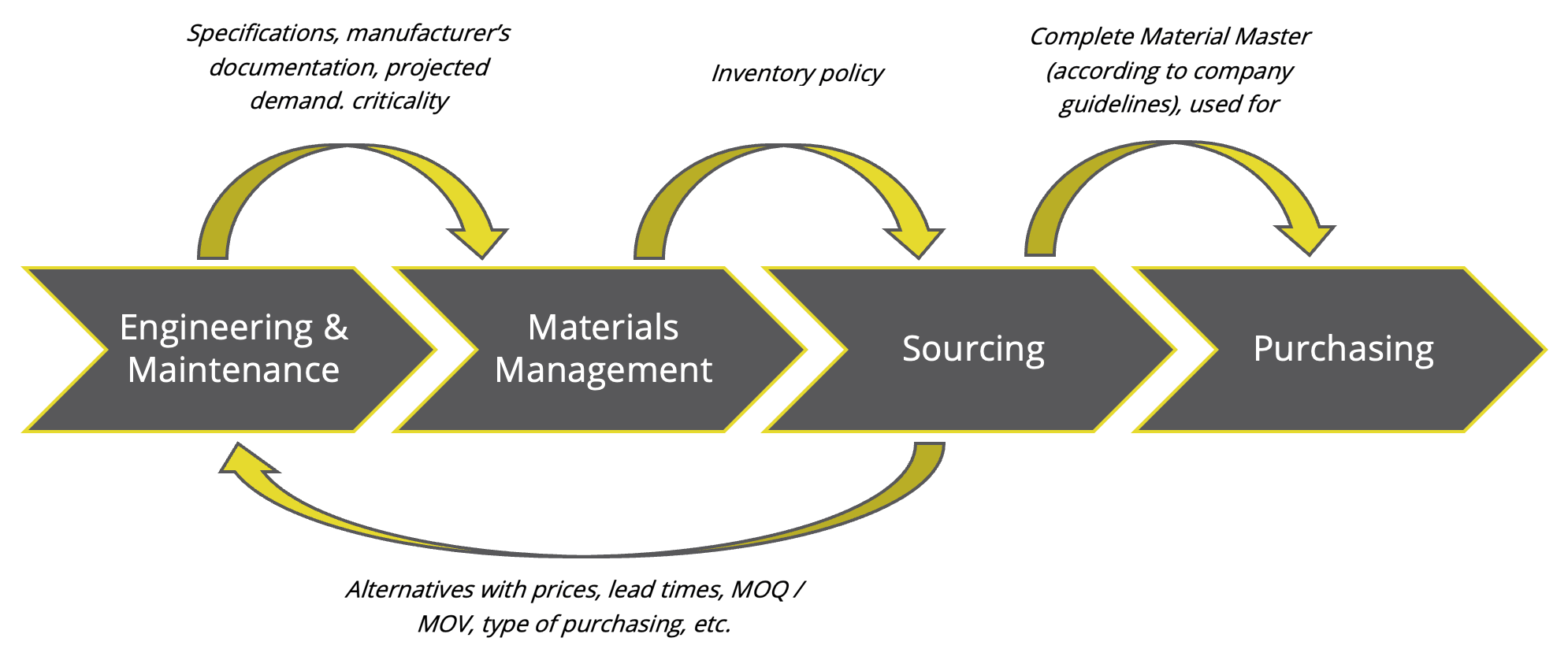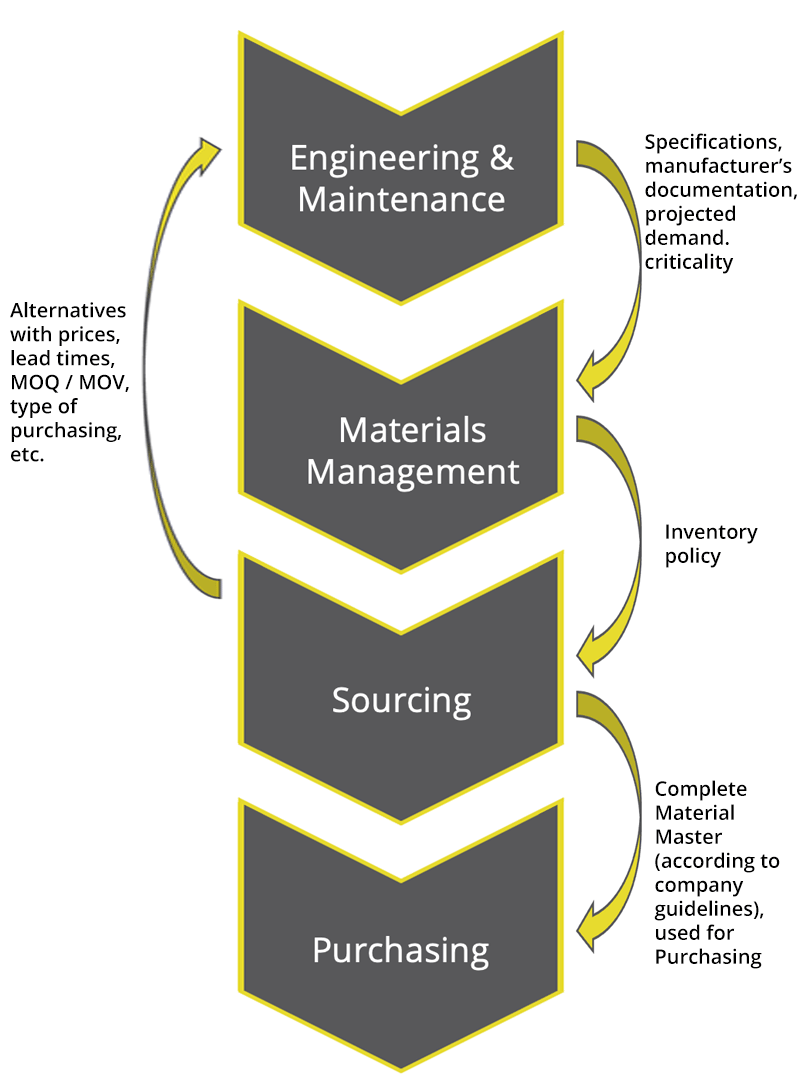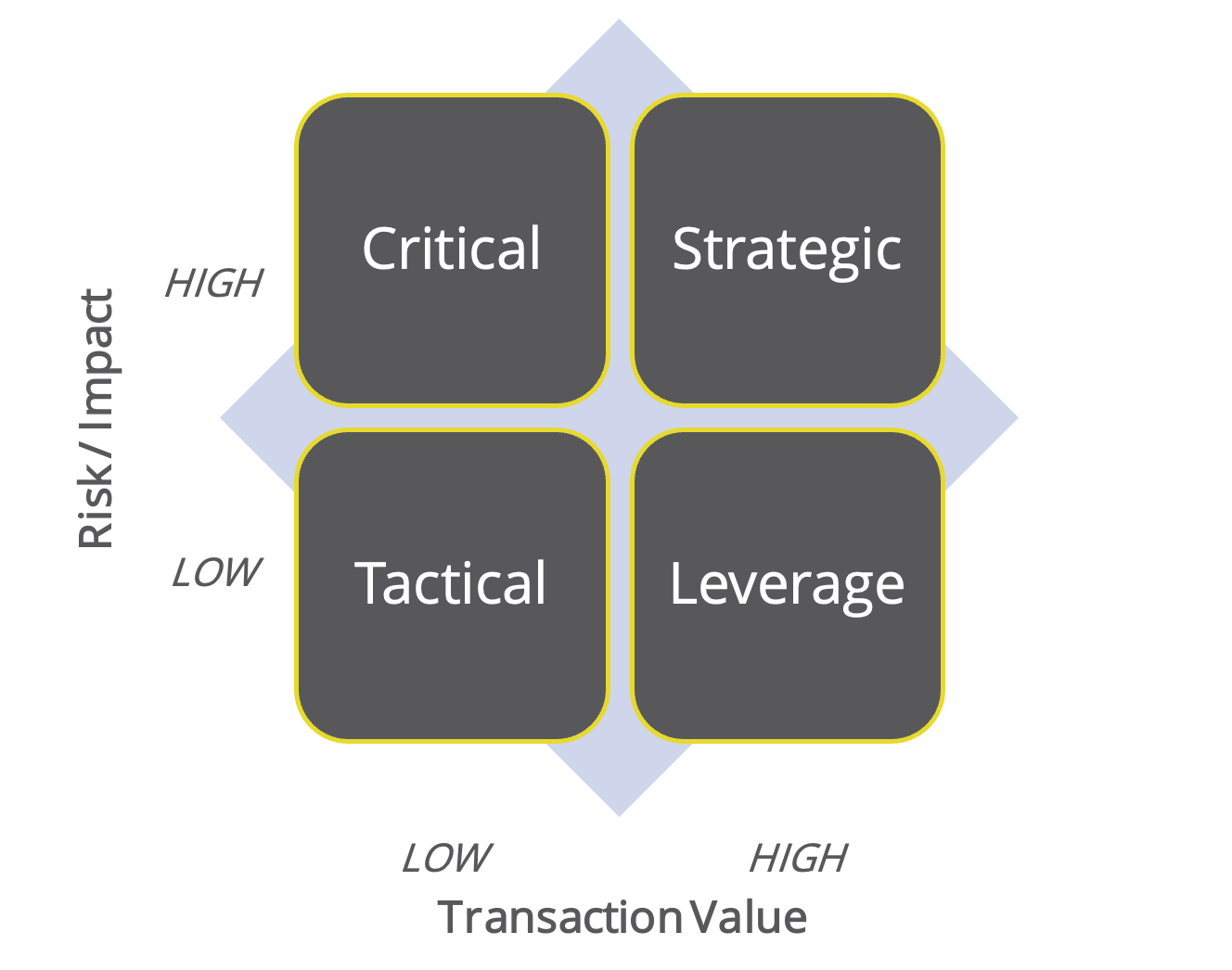
25 Nov Material Mastering
Material Master Data is a simple concept but tends to be made extremely complicated and cumbersome in its implementation. A combination of appropriate frameworks, technology and operating discipline is the best way to ensure an organization’s material master data stays relevant and up to date.
Part of an organization’s Master Data Management (MDM), the material master record (or simply material master) can be defined as:
“A stored record that contains all the relevant information on materials that a company procures, produces, stores and sells”
There are significant operational and financial benefits to having a high-quality, up-to-date material mastering framework, including, but not limited to:
- Reducing inventory levels and avoiding stockouts
- Required materials are easily located in the by stakeholders
- Improves parts sharing across the organization
- Provides a solid data foundation for sourcing
- Reduces erroneous purchasing and enables touchless P2P
- Improves material availability for maintenance
- Improves Enterprise Resource Planning (ERP) system performance through avoidance of redundant data
However, the above definition raises several questions, the two most prominent being:
- What is considered relevant information for the material master record?
- Should every material be mastered?
To discuss the above question, consider a global upstream oil and gas organization. The main use cases for the material master are shown in Figure 1 below:
| USER | Example Material Master Usage |
|---|---|
| Accounting | Pricing information for analysis and inventory valuation |
| Materials Management | Information for Material Requirements Planning (MRP) including inventory policy and packaging and delivery information |
| Purchasing | Relevant purchasing information, depending on type of purchasing |
| Sourcing | Guidance for sourcing |
| Engineering & Maintenance | Engineering and design data on a material including product sheets and specifications |
Figure 1: Material master use cases
While what is considered relevant information in a material master depends on industry and internal company policies and processes, relevant information can be broadly defined as:
“Information enabling all stakeholders to understand the exact nature and characteristics of the material”
At the very minimum, this implies:
- A unique identifier (number or code)
- Set of descriptive parameters (varies by type of materials)
- Manufacturer name and part number where applicable
The following checklist may also be of use when considering information to include in a material master. While information such as ‘material group’ may not seem that important, it becomes important when conducting spend analytics.
- For material masters referencing specific manufacturers and manufacturer’s part number, ensure the specifications / product sheets are uploaded
- Check that the material doesn’t already have a master
- Check whether there is a similar master that can be copied and modified to save time in entering attributes
- Determine which plants and / or storage locations needs the material master
- Ensure the material type allocated follows the defined company nomenclature
- Ensure the description is fit-for-purpose follows the defined company nomenclature
- Take care when entering the unit of measure
- Ensure material group is correctly allocated
- Ensure that the inventory policy is fit-for-purpose
In summary, a material master can take a very short time to complete if for example, the product sheets are available and / or the exact specification and supplier is known, but it can be a significantly longer task if sourcing needs to be involved, as shown in the simplified, concept graphic in Figure 2 below. In this case, it can be an iterative process to finalize the material master for use. Additionally, each material master created, is a material master that needs to be maintained for changes in parameters and obsolescence and supersession.


Figure 2: Safety vs Productivity trade-off in conceptual downstream oil & gas organization
Of course, in cases where there is just one supplier or one possible material, the above becomes much simpler.
In a global setting, there will most likely be an approval step to ensure the material master is fit-for-purpose on the global scale, before approving the material master for use at the regional or asset level.
Considering our example of global upstream oil and gas organization, the number of material masters could run into the hundreds of thousands (and maybe even a million, depending on the scale and variety of operations), which despite modern technology, requires a significant administrative effort and discipline to maintain and update. It makes sense to discuss whether absolutely all materials require a material master.
For illustration, think of Personal Protective Equipment (PPE), which contains work clothing. The number of variables is huge: size, color, material, immediately springs to mind, as well as a range of customization options. If an organization were to master each individual PPE option, >100 individual material masters could potentially be generated!
The same can be said for a wide range of consumables, including stationary, generic nuts, screws and bolts and similar materials. Another common feature of these type of materials (hereafter referred to as consumables) is that they tend to fall in the ‘Tactical’ quadrant in the Kraljić matrix / Purchasing Portfolio matrix (PPM) shown below in Figure 3:

Figure 3: Kraljić matrix / Purchasing Portfolio matrix (PPM)
For more on Figure 3, see this article on Suppler Segmentation. For purchasing activity in this quadrant, it is recommended to lower the number of transactions, and the associated transaction costs.
Instead of mastering each variant of these consumables individually, there are three potential alternatives, shown below in order of preference from a purchasing risk point of view:
- Supplier catalogues
- Generic material masters
- Free text purchasing
Supplier catalogues are interactive catalogues stored on the buying organization’s website, such as in the SAP PunchOut catalogue, in which materials can be selected from the supplier catalogue, detailed specifications and delivery considerations added, and then purchased. If authority is delegated to the front line, this method has a very low transaction costs, although set-up costs can be high.
Generic material masters are essentially material masters with the fields where the variable specification occurs is left blank. In this way, the generic material master can be used, and the exact specifications added in the free text field. As with supplier catalogues, if authority were to be delegated to the front line, transaction costs are very low, and there are no set-up costs with this method, other than creating the generic material masters.
Free text purchasing are essentially material masters with the fields where the variable specification occurs is left blank. In this way, the generic material master can be used, and the exact specifications added in the free text field. This method typically necessitates some manual intervention and is not recommended except for one-off purchases.
It is important to understand that when using the above methodologies, spend data integrity may be lost, and each organization should decide whether this is a trade-off worth considering.
So, regardless of what is assigned as ‘relevant data’ and whether all materials are mastered, what are the challenges with establishing and maintaining material master data? There are 2 main reasons:
- Inadequate or not fit-for-purpose framework for material mastering (including processes, management systems and technologies)
- Lack of operational discipline in the organization
Considering firstly the framework for material mastering, and its key components:
| Component | Description |
|---|---|
| Classification system |
|
| Technology |
|
| Process |
|
| Management system |
|
1 Responsible, Accountable, Consulted, Informed
Figure 4: Core components of a material mastering framework
In terms of operational discipline, Figure 5 below summarizes the research of Knapp and Hasibether considering user behaviors in relation to material masters:
| User Mindset | Result on Material Master |
|---|---|
| ‘Less is more’ |
|
| ‘Flexibility is king’ |
|
| ‘Management by exception’ |
|
| ‘Wrong guess’ |
|
| ‘Fast worker’ |
|
Figure 5: Material master usage across and organization
While it is challenging to make master data management a part of day-to-day operations, it really is the key to realizing the inherent benefits in this area. New technology solutions should already be available, but don’t rely on technology by itself. Strong foundations and operational discipline need to be in place before a new technology will deliver its promised benefits, whatever they are.
Alan Aastorp has built capabilities and delivered performance improvements for over 20 years, including engagements with some of the world’s largest companies, as well having professional qualifications in Supply Chain Management, Finance and HR. Alan can be reached at aastorp@productivity-lab.com.
References
ERPDB. (2019). Material Master Overview in SAP ERP. [online] Available at: https://www.erpdb.info/material-master-overview-sap-erp/ [Accessed 22 Nov. 2021].
infoplusmdm.com. (n.d.). MATERIAL MASTER DATA standardisation AND ENHANCEMENT. [online] Available at: https://infoplusmdm.com/material_master_data_standardisation_and_enhancement.html [Accessed 22 Nov. 2021].
Material Master Data Cleansing, Master Data Governance – Verdantis.com. (2019). Low-Quality Material Master (MRO) Data and how it’s Affecting your Organization. [online] Available at: https://www.verdantis.com/low-quality-material-master-mro-data-and-how-its-affecting-your-organization/ [Accessed 22 Nov. 2021].
help.sap.com. (n.d.). SAP Help Portal. [online] Available at: https://help.sap.com/viewer/af9ef57f504840d2b81be8667206d485/2020.000/en-US/3d7eb65334e6b54ce10000000a174cb4.html [Accessed 22 Nov. 2021].
help.sap.com. (n.d.). SAP Help Portal. [online] Available at: https://help.sap.com/viewer/1e9220c0f83d42d097418c387d3bea9b/cloud/en-US/ddad6414f0181014a101c57556f63c7d.html [Accessed 22 Nov. 2021].
Knapp, M. and Hasibether, F. (2011). Material Master Data Quality. [online] www.reasearchgate.com. Available at: https://www.researchgate.net/publication/261208530_Material_master_data_quality [Accessed 22 Nov. 2021].


